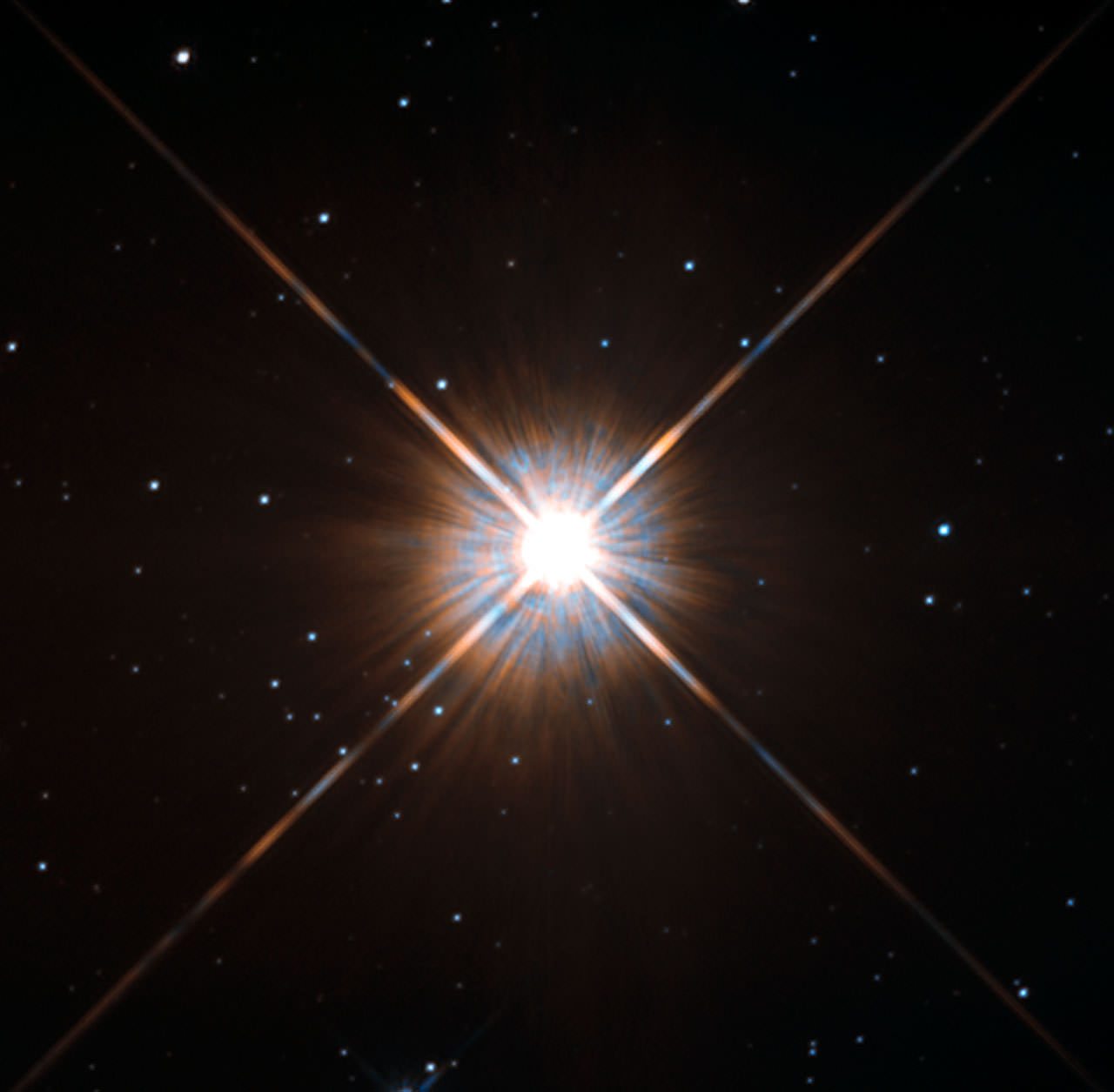Remember that planet discovered near Alpha Centauri almost exactly a year ago? As you may remember, it’s the closest system to Earth, making some people speculate about how quickly we could get a spacecraft in that general direction. Four light years is close in galactic terms, but it’s a little far away for the technology we have now — unless we wanted to wait a few tens thousands of years for the journey to complete.
Meanwhile, we can at least take pictures of that star system. The Hubble Space Telescope team has released a new picture of Alpha Centauri’s sister star, Proxima Centauri. While Proxima is technically the closest star to Earth, it’s too faint to be seen by the naked eye, which is not all that surprising given it is only an eighth of the sun’s mass. Sometimes, however, it gets a little brighter.
“Proxima is what is known as a ‘flare star’, meaning that convection processes within the star’s body make it prone to random and dramatic changes in brightness.” stated the Hubble European Space Agency Information Centre.
“The convection processes not only trigger brilliant bursts of starlight but, combined with other factors, mean that Proxima Centauri is in for a very long life.”
How long? Well, consider the following: the universe is about 13.8 billion years old and Proxima is expected to remain in middle age for another four TRILLION years. Plenty of time for us to send a spacecraft over there if we’re patient enough. (The universe itself is expected to last a while, as Wise Geek explains.)
The picture was nabbed with Hubble’s Wide Field and Planetary Camera 2, with neighbouring stars Alpha Centauri A and B out of the frame.


Closest Star to earth? Somewhere above the rainclouds I see today is a closer one 🙂
Closest system to Earth. 🙂
Closest star TO OUR SUN…not closest star to the Earth….
It’s really important to explain what this image is. It is NOT a picture of Proxima Centauri (PC).
It is a hugely over exposed picture of light on a zillion wavelengths, indirectly produced by PC. If you took a grossly overexposed picture of a red christmas tree bulb from 100 yards away with this camera, you’d get the same image.
The four spikes have nothing to do with anything — they are, let’s call them bad reflections in the lense of the camera that took the picture. The surface of this small star (barely larger than Jupiter) might actually be a small, very dim magenta pinprick located where those two large X-shaped spikes intersect. Only; ironically, you can’t see it here.
Same thing goes for the swell rainbow colors and smaller smaller spikes in the picture — all produced by the camera lense and not really what you’d see if you flew out there and looked at the star from, say, ten million miles away. The pinprick might be half as large as our sun, but rather dim and red.
This picture is still very useful to astronomers, but it’s hardly a realistic visual image of the star, as this article implies.
Thanks for the great article, Elizabeth. Pay no attention to detractors.
As I recall, Proxima is a long way from A & B Centauri, so shouldn’t planets have been able to develop with it? I wonder if the “flare” nature of the star would deter the development of life in its HZ for any planets that might have formed there. Sounds rather chaotic and hazardous to life. Is this typical of red dwarfs?
Yes, this is common among red dwarfs. Any planets withing the habitable zone are close enough to be affected by flares.